Piqué means “pricked.” It refers to an exercise usually performed on the bar (battement tendu piqué). On the other hand, piqué is also a connecting movement. In this article, we will explain each of them so you can perform them perfectly.
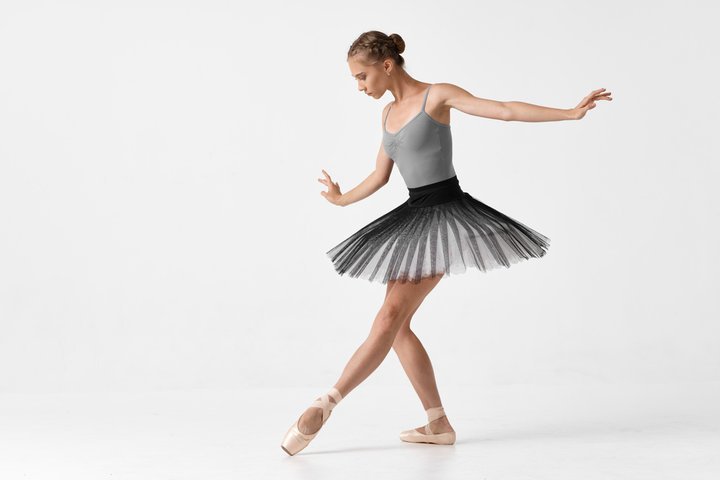
Table of Contents
Battement Tendu Piqué
This is a movement in which the toe of the raised and extended leg drops sharply for a moment until it touches the ground. And then it immediately bounces back up. This step is also known as “pointe”, battement tendu jeté piqué, or simply “piqué”. Practising this exercise at the barre is very common, although it can also be done in the centre.
How to do piqué at the barre?
1) Feet in fifth position, right foot forward
2) Perform a degagé with the right leg, stopping the leg in the air for a moment
3) The leg must be completely stretched and turned outwards. The foot is completely pointed.
4) Then, hit the ground with the toe, like a pinprick.
5) The leg and foot instantly rise back to the position in the air.
6) The tap can be repeated as many times as necessary.
7) When finished, slide the foot along the floor with the leg fully stretched to the first or fifth position.
To understand this move, I remember my dance teacher telling us to pretend the floor was burning. It’s like trying to take a cake out of the oven without your oven mitts on. It’s so hot that you’ll instantly drop it. You should do the same with your foot in piqué. Imagine the floor is so hot that your foot touches it for just a millisecond, then lift your leg almost instantly.
Tips for doing piqué perfectly
- The accent of the working leg and foot is UP! from the ground.
- On the descent, your foot should be brought down sharply.
- In the air and at ground level, the foot should be fully pointed and the toes actively pressed against the shoe’s sole.
- Remember to maintain the rotation of both the supporting and the working leg.
- When tapping the floor with the toe of your foot, you should make little or no sound.
- Each upward movement ends with a stop when the rhythm allows it.
The objective of this step
This exercise develops the skill and strength needed to initiate the up and down movement of the leg very quickly and to stop the extended leg in the air. Performing this exercise, students learn to use the working leg and pointed foot as an entity and acquire directional acuity. Also, this movement serves as preparation for glissades in all directions, cabrioles and grand jetés. Lastly, the tendu piqué also helps to develop the speed needed for beats.
Piqué as a connecting movement
Connecting movements link various poses, prepare the dancer for certain actions, facilitate transitions between locations, or combine these functions. These steps enhance the flow of movement, keeping it dynamic rather than static. Examples include glissé (or chassé), tombé, piqué, and pas de bourrée.
Piqué means “pricked or pricking”. It is performed by stepping directly on the tip or half-point of the working foot in any direction or desired position with the other foot raised in the air. For example, in arabesque or attitude. Piqué is a versatile movement. It combines with poses, and many adagio steps, and is an integral part of turns.
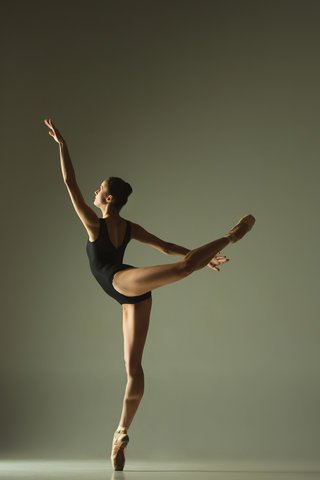
How to perform Pique en Avant
1) Feet in fifth, right foot forward
2) Perform a dégagé en avant (or developpé) with the right leg, at the same time as you do a plié with the supporting leg.
3) To achieve this movement, push off strongly from the supporting foot and take a step well forward with the right leg. Then, with your right leg fully stretched, place the tip of the foot on the floor and quickly bring the left leg to the desired position. For example, arabesque, retiré or attitude.
4) Finally, close your left foot behind the right in the fifth position.
5) As for the arms, the movement usually starts with the right arm in the first position and the left arm in the second. However, the final position of the arms varies depending on the final pose chosen.
Avoid these mistakes
- Losing your turn out when stepping onto piqué
- Failing to transfer your weight quickly from one leg to the other.
Learn the basic positions and movements here:
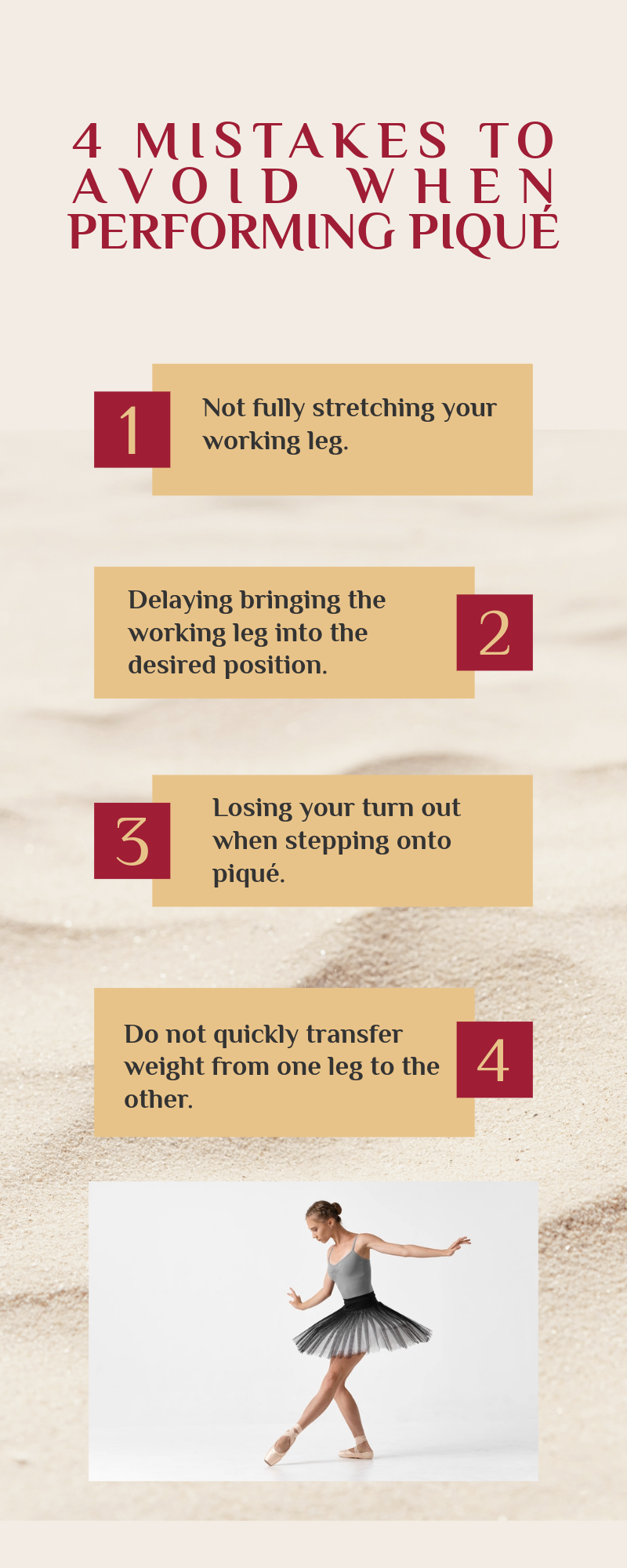
How to do Piqué Turns en Dedans
1) To turn to the right, extend your right leg forward while doing a plié on the supporting leg. Simultaneously, turn your head towards your right shoulder, and place your right arm in the first position and your left in the second.
2) Keeping your right leg straight with the foot pointed, bring it to the second position. With a strong push from the supporting foot, immediately look towards the right leg and take a direct step on the demi-pointe, knee straight. At the same time, bring your right arm to the second position, accompanying the movement of the right leg. Place the left foot sur le cou-de pied derriére (on the back of the right ankle) or en retiré derriére (behind or just below the back of the right knee).
3) Execute a three-quarter turn en dedans to the right while closing the arms in the first position. During the turn, the head briefly turns towards the left shoulder and then quickly returns to the right shoulder.
4) Finally, lower the left leg into plié. At the same time, quickly extend the right leg forward, keeping the knee straight and the toes just a few inches from the ground, opening the left arm to the second position. In this way you return to the preparatory position, to start the turn again.
More tips
- Be careful to maintain the turn out of your working leg by bringing the heel forward in the piqué
- Bring your working leg immediately into position
- Do not fall down your body forward in the plié, do not pull it back in the piqué
- Spot front or where directed
Mastering the Piqué Movement
The way to execute this movement may vary depending on whether you are dancing an allegro or an adagio. In the allegro, you must reach the desired position (for example, arabesque) at the same time as the tip of the other foot touches the floor. On the other hand, In the adagio, you can take a few moments to “finish adjusting” to the desired position, until you reach the maximum.
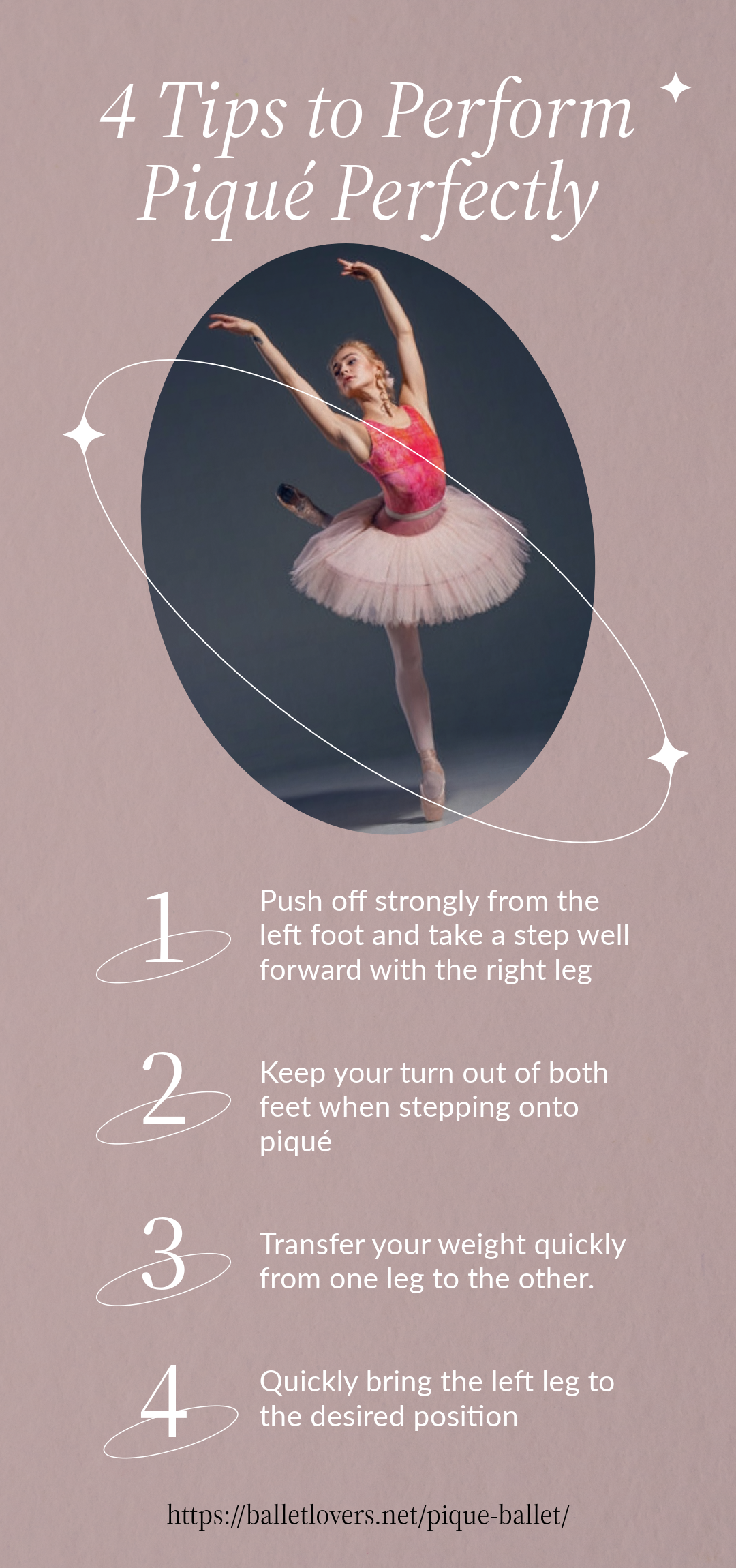
In this movement, the dancer transfers their body weight from the plié leg to the piqué leg. On the other hand, do the plié in a way that propels you forward. In other words, do not place the tip of your working foot directly beneath its toe, but rather slightly further forward. Finally, always remember to maintain the turnout of the foot that is performing the piqué.
In a beginner ballet class, dancers often perform piqué soutenu or combine piqué en avant with retiré. They can execute piqué turns or combine piqué with attitude or arabesque at intermediate or advanced levels.
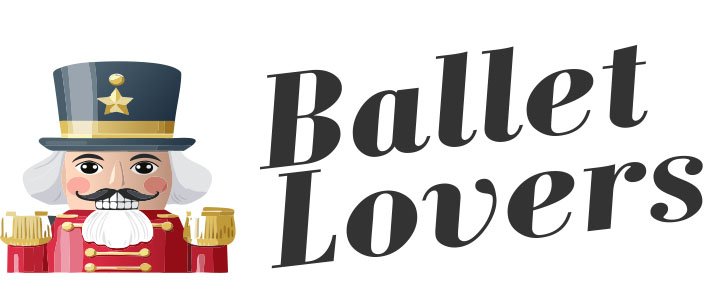
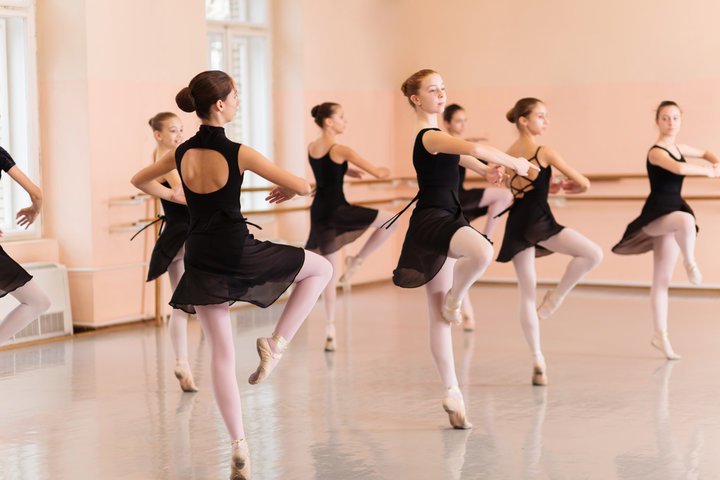
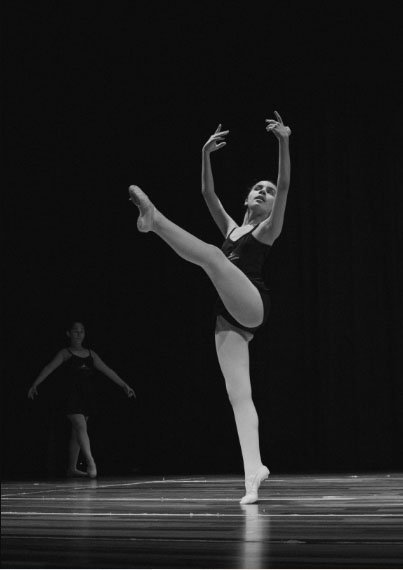


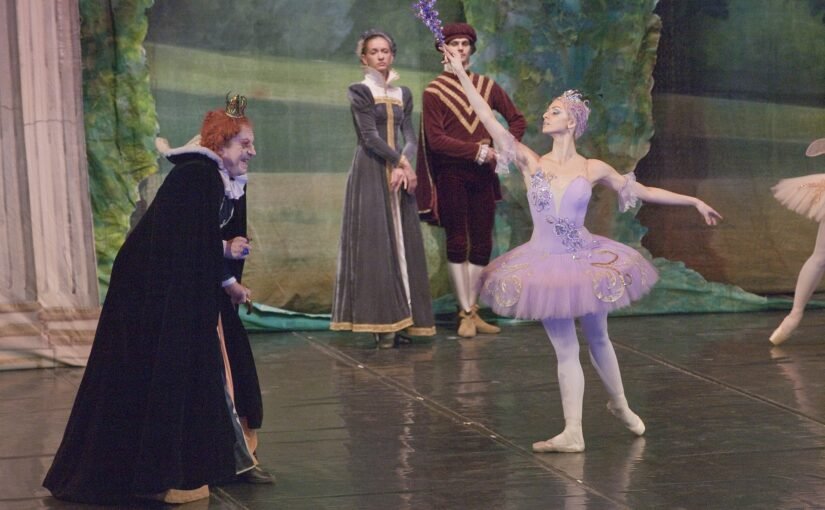
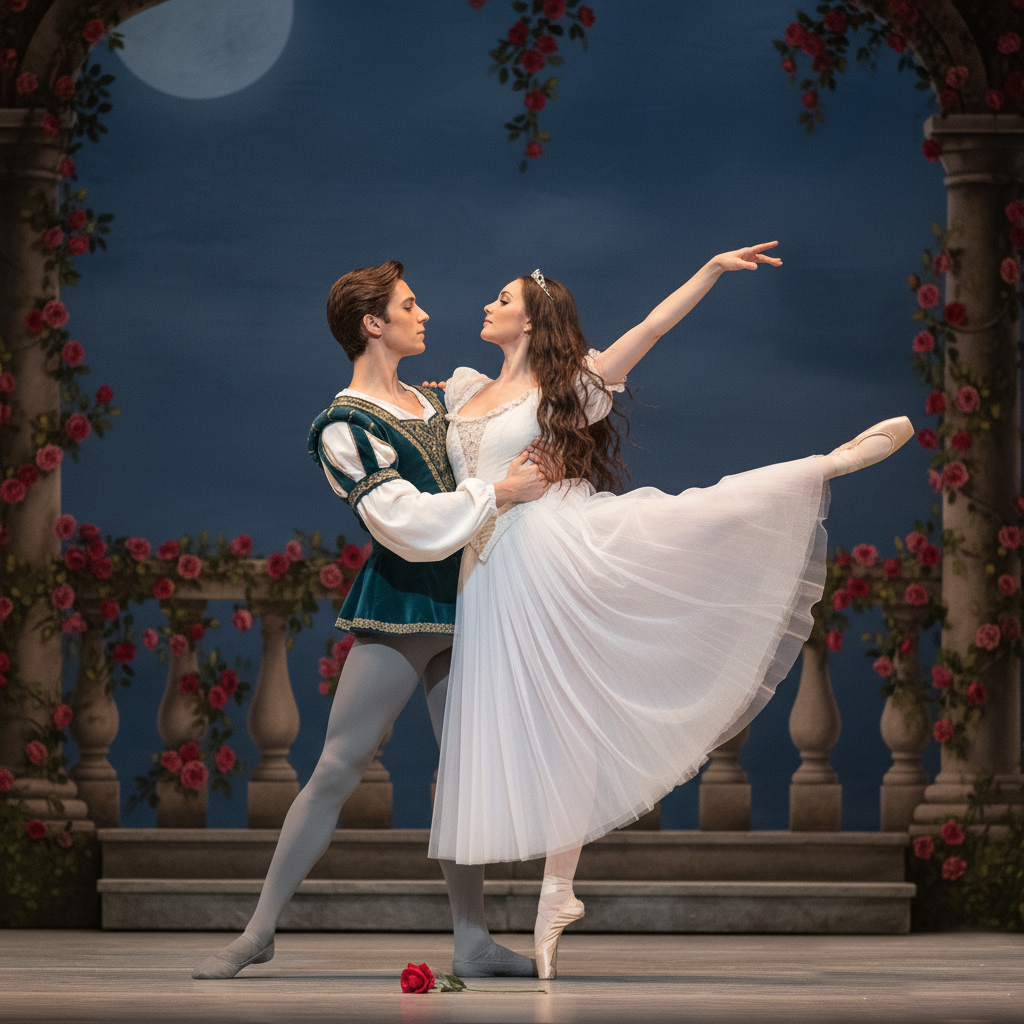
Leave a Reply